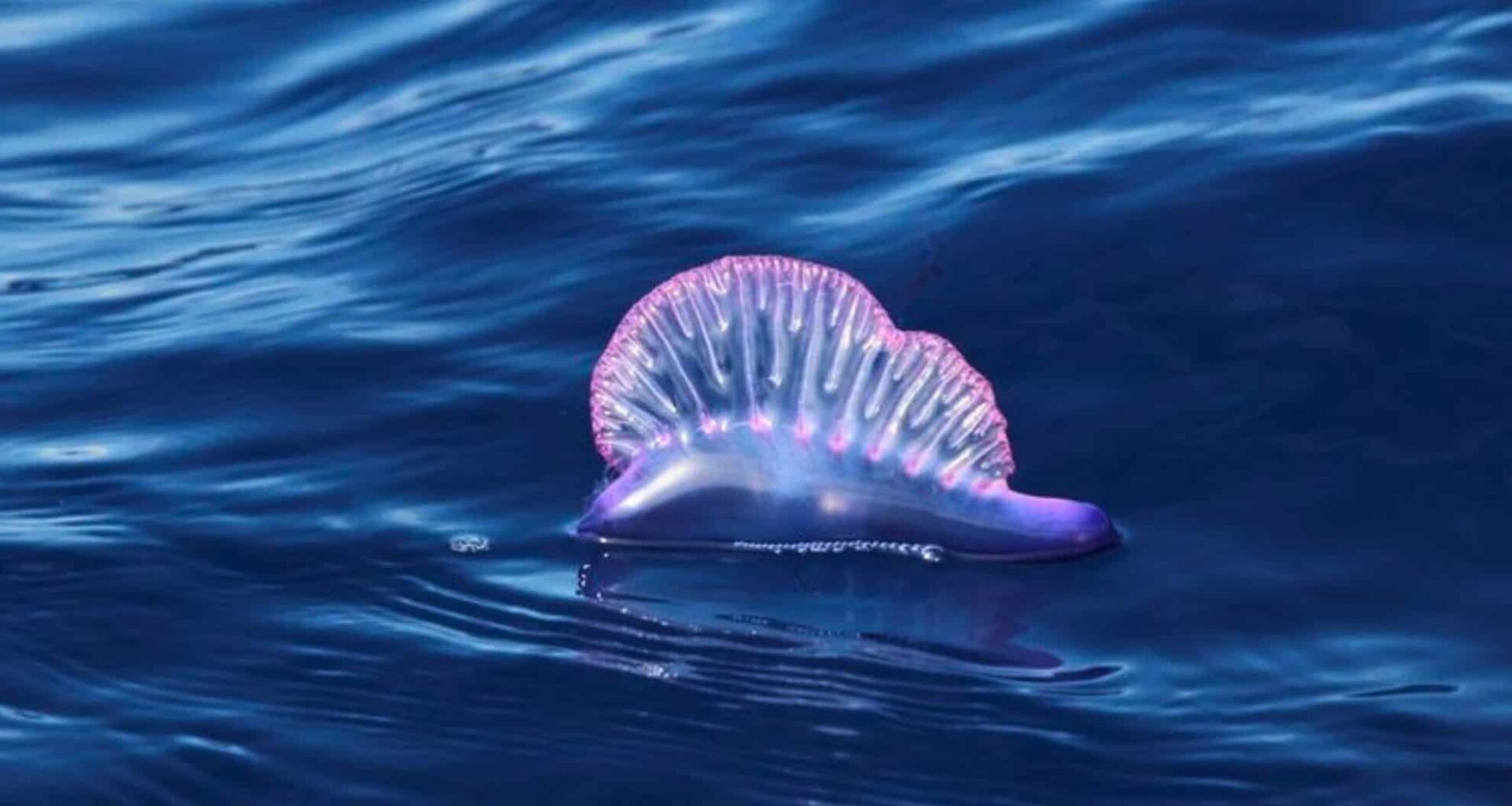If you’re planning to visit the French Basque coast or the Landes region this summer, you might want to keep an eye out for something that looks like a jellyfish but is far more dangerous. The Portuguese Man o’ War (Physalia physalis), a marine creature with stunning, vibrant colors, has recently made its presence felt on the shores of southwestern France. With its 20-meter-long tentacles and a venom potent enough to cause severe health issues, this creature is responsible for the closure of several beaches along the coast. Here’s what you need to know about this marine marvel—and its dangers.
What Is the Portuguese Man o’ War?
At first glance, the Portuguese Man o’ War might seem like just another jellyfish drifting in the ocean. However, this creature is actually a colonial organism made up of four distinct parts. The float (which resembles a balloon) sits at the surface of the water, while its long, trailing tentacles hang below. Unlike jellyfish, which are single organisms, the Portuguese Man o’ War functions as a team, with each part performing a different role for the survival of the whole.
This fascinating marine animal is usually found in tropical and subtropical waters, but in recent years, it has ventured into the cooler waters of the Atlantic Ocean—including the coastline of southwestern France. While its stunning appearance might draw tourists, it’s best to avoid getting too close. The tentacles contain venomous cells that are capable of delivering a painful and potentially deadly sting.
Why Are Beaches Being Closed?
The presence of the Portuguese Man o’ War has prompted local authorities in the Basque Country and Landes regions to close several beaches for safety. Since July 25, 2025, a number of popular spots, including beaches in Bidart, Biarritz, and Anglet, have been shut down. The decision comes after several sightings of this creature along the coastline, especially in areas heavily frequented by tourists.

In Bidart, five beaches, including Pavillon Royal and Erretegia, have been marked with red flags, indicating a formal ban on swimming, reports the regional French newspaper Sud Ouest. Other beaches in nearby towns, such as Marbella and La Milady in Biarritz, have also been closed due to the ongoing presence of these creatures.
Although the recent sightings involve smaller Portuguese Man o’ War specimens, authorities are erring on the side of caution, especially during peak tourist season. It’s better to close a beach and prevent an injury than deal with the aftermath of an unfortunate encounter.
The Venomous Danger of the Portuguese Man o’ War
What makes the Portuguese Man o’ War so dangerous is its venom. The sting from its tentacles can lead to a range of severe symptoms that include intense pain, inflammation, and redness. The venom is not just a skin irritant, though—it can trigger serious health issues like breathing difficulties, heart failure, and neurological problems. The sting can also lead to nausea, fever, and anxiety, often within minutes of contact.
The venom’s power is such that it can kill smaller marine creatures, and in rare cases, humans have experienced fatal reactions. While most people recover after medical treatment, the sting can make it difficult for victims to swim, and in extreme cases, it can even lead to drowning if the pain becomes too much to bear.
If you’re stung, it’s crucial to seek medical attention immediately. Treatments can range from pain management to more intensive care, depending on the severity of the reaction. Even though most symptoms subside within a few days, it’s always safer to err on the side of caution and consult a healthcare provider.
